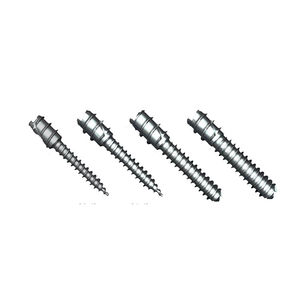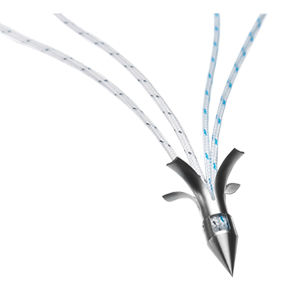
- Secondary care
- Orthopedic surgery
- Humeral intramedullary nail
- Wright Medical Technology
Humeral intramedullary nail AEQUALIS™ IMproximal fixation

Add to favorites
Compare this product
Characteristics
- Joint / bone
- humerus
- Fixation
- proximal fixation
Description
HUMERAL FRACTURE SYSTEM
Key Benefits
AEQUALIS™ Fixation Philosophy
Fix the tuberosities in order to support the head
AEQUALIS™ IM Nail Design
Tuberosity-based screw pattern lags fragments perpendicular to the pull of the muscles
Screw pattern supports periphery of humeral head fragment and avoids the articular surface
Straight nail design avoids rotator cuff insertion
A new perspective on fracture management
Clinical Results
• 24 patients treated with a mean
age of 64 years (range, 27-83 years)
for displaced unstable fractures using
the AEQUALIS™ IM Nail
• Patient follow-up averaged 9 months
(range 6-18 months)
• All fractures healed and all patients
recovered enough motion to perform
daily activities independently
• No patient required further
surgical intervention
Advantages of IM Nailing
• Less extensive soft tissue dissection maximizes periosteal blood supply while preserving
vital surrounding structures.
• Improved construct stability even in the case of comminuted fractures and osteopenic
bone while still maintaining desired elasticity.
• Fracture solutions, such as plating, are believed by some to be too rigid.5
• Efficient procedure, especially when using a percutaneous approach.
Wright delivers another design philosophy
The AEQUALIS™ IM Nail was created from extensive
proximal humerus dimension and geometry studies.1
Additionally, the basic pathophysiology of displaced
unstable 2, 3 and 4-part fractures was revisited,2, 3
resulting in the 5 design principles:
1 Humeral Head Support: The nail must act as a mechanical strut to support humeral
head fragments under compressive forces thereby resisting
valgus/varus subsidence.
VIDEO
Catalogs
No catalogs are available for this product.
See all of Wright Medical Technology‘s catalogsRelated Searches
- Bone plate
- Compression plate
- Metallic compression plate
- Locking compression plate
- Distal compression plate
- Compression bone screw
- Metallic compression bone screw
- Proximal compression plate
- Forearm compression plate
- Arthrodesis nail
- Lateral compression plate
- Tibia compression plate
- Bone substitute
- Radius compression plate
- External fixation system
- Arthrodesis plate
- Cannulated compression bone screw
- Adult external fixation system
- Non-locking compression plate
- Proximal fixation intramedullary nail
*Prices are pre-tax. They exclude delivery charges and customs duties and do not include additional charges for installation or activation options. Prices are indicative only and may vary by country, with changes to the cost of raw materials and exchange rates.





































